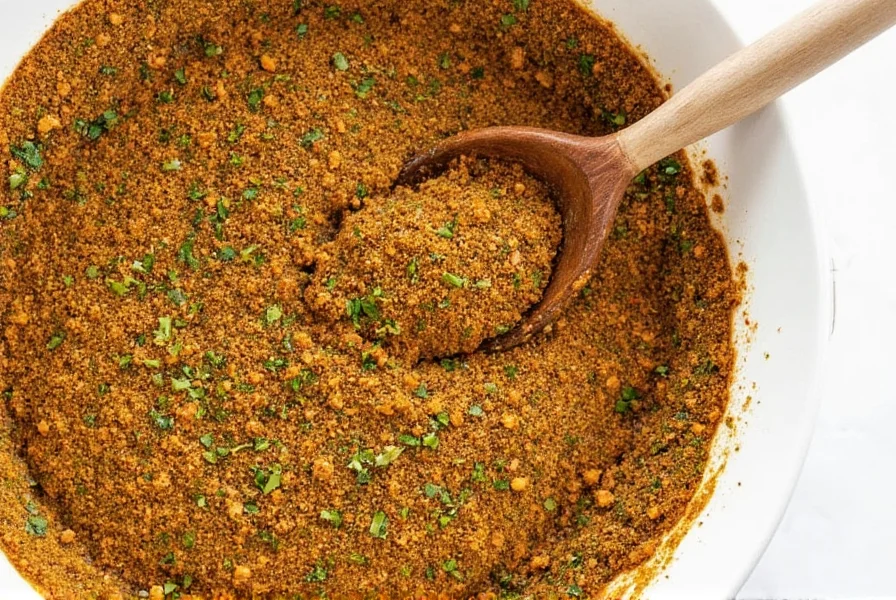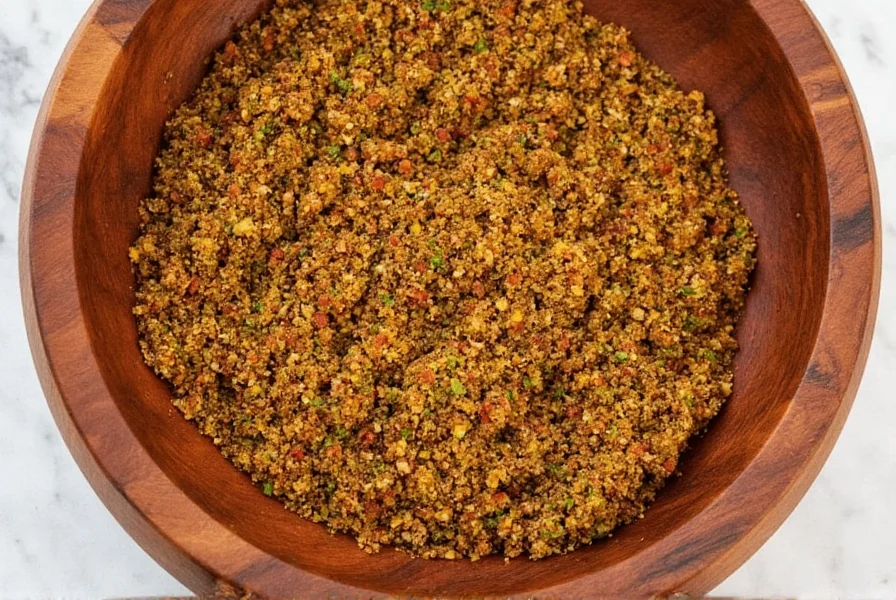Chermoula: The Flavor Bomb You Didn’t Know Your Kitchen Needed!
Table of Contents
- Introduction: What Is Chermoula?
- Origins and Cultural Roots of Chermoula
- The Flavor Profile of Chermoula
- Creative Uses for Chermoula in Your Kitchen
- How to Make Authentic Chermoula at Home
- Buying Guide: Choosing the Best Chermoula Products
- Perfect Pairings: What Goes Well with Chermoula?
- Chermoula in Global Cuisine Trends
- Conclusion: Spice Up Your Life with Chermoula
Introduction: What Is Chermoula?
If you haven't yet fallen head over heels for chermoula, prepare to be amazed. This vibrant, aromatic spice blend hails from North Africa—Morocco, Algeria, and Tunisia specifically—and is typically used as a marinade or sauce. But don’t let its humble appearance fool you: chermoula packs a flavor punch that can transform anything from grilled fish to roasted vegetables.
In this blog post, we’ll walk through everything you need to know about chermoula, including how to make it, where to buy it, and creative ways to use it. Whether you're an amateur home cook or a seasoned chef, there's something here for everyone.
Origins and Cultural Roots of Chermoula
Chermoula has deep roots in Berber cuisine, dating back centuries. It was traditionally used by fishermen who would marinate freshly caught fish in the bold mixture before grilling it over open flames. Over time, the recipe evolved and spread across regions, incorporating local herbs, spices, and oils.
Each country has its own take on chermoula, but the core ingredients remain remarkably consistent: fresh herbs like parsley and cilantro, garlic, lemon juice, olive oil, paprika, and cumin are the base notes in most versions. Some variations add chili flakes for heat or saffron for depth.

The Flavor Profile of Chermoula
Think of chermoula as a culinary symphony—each ingredient plays a distinct role but blends harmoniously:
- Parsley & Cilantro: Bright and herbal, giving the mix a fresh green lift.
- Garlic: Adds a pungent, earthy note that balances the brightness of the herbs.
- Lemon Juice: Brings acidity and zing, perfect for cutting through richer dishes.
- Olive Oil: Binds the ingredients together and adds richness.
- Paprika & Cumin: Provide warmth and depth, anchoring the other flavors.
The result? A paste that’s herbaceous, tangy, slightly spicy, and completely irresistible.
Creative Uses for Chermoula in Your Kitchen
You might think chermoula is only for fish, but that couldn’t be further from the truth! Here are five genius ways to use chermoula beyond the obvious:
- Mix into grain bowls: Add a dollop to quinoa or couscous for an instant flavor boost.
- Slather on grilled veggies: Zucchini, eggplant, and bell peppers love chermoula.
- Marinate chicken: Let your poultry soak in chermoula overnight for deeply flavorful meat.
- Stir into soups or stews: For an herby twist, stir in a spoonful right before serving.
- Use as a sandwich spread: Think avocado-chermoula sandwiches—game-changing!
How to Make Authentic Chermoula at Home
Homemade chermoula is easy, cheap, and infinitely customizable. Here's a simple recipe to get you started:
Classic Chermoula Recipe
| Ingredient | Quantity |
|---|---|
| Fresh parsley, chopped | ½ cup |
| Fresh cilantro, chopped | ½ cup |
| Garlic cloves, minced | 3–4 |
| Lemon juice | 2 tbsp |
| Olive oil | ¼ cup |
| Ground cumin | 1 tsp |
| Paprika | 1 tsp |
| Salt | To taste |
| Cayenne pepper (optional) | Pinch |
Instructions:
- Add all ingredients to a blender or food processor.
- Pulse until well combined but not overly smooth.
- Taste and adjust seasoning.
- Store in the fridge for up to one week or freeze in portions for later use.

Buying Guide: Choosing the Best Chermoula Products
If making your own isn’t your thing, no worries—there are some excellent ready-made chermoula products out there. Here’s what to look for when shopping:
- Ingredients: Should include real herbs, spices, lemon, and minimal preservatives.
- Packaging: Freshness matters—opt for refrigerated or vacuum-sealed options if available.
- Texture: Chunkier pastes tend to have more depth than overly processed ones.
Top 5 Ready-Made Chermoula Brands Compared
| Product | Features | Best For | Occasion |
|---|---|---|---|
| Zesty North African Chermoula Paste | All-natural, refrigerated, rich in parsley and garlic | Chefs looking for authentic flavor | Dinner parties, seafood nights |
| A Taste of Morocco Chermoula Blend | Dehydrated powder, reconstitutes easily, shelf-stable | Home cooks with limited fridge space | Weeknight meals, camping trips |
| Mediterranean Flavors Organic Chermoula | Organic ingredients, vegan-friendly, gluten-free | Health-conscious users | Salads, grain bowls |
| Spice Garden Chermoula Kit | DIY spice kit with step-by-step instructions | Beginners and educators | Kids’ cooking, cooking classes |
| Global Spices Chermoula Cubes | Pre-portioned frozen cubes for easy use | Bulk cooks and meal preppers | Batch cooking, freezer stash |

Perfect Pairings: What Goes Well with Chermoula?
Now that you’ve got your chermoula game down, here are some dreamy pairings to elevate your meals:
- Grilled Fish: Classic pairing—especially white fish like cod or halibut.
- Roasted Eggplant: The soft texture contrasts beautifully with the bright flavors.
- Lamb Kebabs: Adds a Mediterranean twist to grilled meats.
- Chickpea Stew: Gives vegetarian dishes a burst of freshness.
- Citrus Salad: Balance the herbiness with oranges, fennel, and arugula.
Chermoula in Global Cuisine Trends
With the rise of plant-based eating and global flavor exploration, chermoula has found new fans far beyond North Africa. From trendy LA cafes to Michelin-starred restaurants, chefs are putting their own spins on this classic paste:
- Modern Fusion: Chermoula aioli, tacos with chermoula slaw, even chermoula-infused cocktails.
- Fast-Casual Restaurants: Used as a topping for poke bowls, burgers, and flatbreads.
- Food Influencers: Social media has helped push chermoula into the spotlight, especially on TikTok and Instagram.
It’s safe to say that chermoula is having a moment—and it’s not just a passing trend.
Conclusion: Spice Up Your Life with Chermoula
From its humble beginnings in North African kitchens to its rising star status in global gastronomy, chermoula is a spice blend that deserves a permanent spot in your pantry. Whether you choose to make it yourself or pick up a high-quality store-bought version, the versatility and flavor it brings to the table are unmatched.
So go ahead—grab those herbs, fire up your blender, and let chermoula become your next kitchen essential. Your taste buds will thank you!










 浙公网安备
33010002000092号
浙公网安备
33010002000092号 浙B2-20120091-4
浙B2-20120091-4